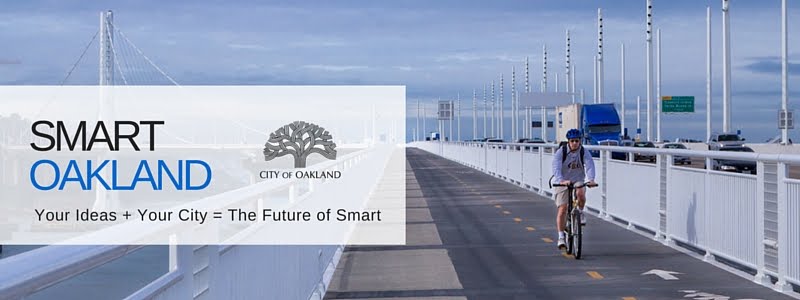This is a topic that is near and dear to my heart as my primary responsibility at the City of Oakland is managing the City's twenty municipal parking garages and lots. This past November at the California Public Parking Association (CPPA) annual conference, I had the honor of facilitating a general session workshop on the topic of "Smart Parking Initiatives," combining insights from Xerox, the City of Berkeley's goBerkeley program and recent efforts to study and implement smart meter technologies and demand-responsive parking strategies in Oakland.
CPPA Smart Parking Initiatives General Session Workshop (28.6mg file)
Thanks to Kevin from DKS, we have some more food for thought on the importance of smart parking in our response to the Dept. of Transportation's Smart Challenge.
A re-imagining of the role of parking within and adjacent to the downtown would improve the vitality of the downtown and adjacent residential and commercial areas. Reducing circulating traffic would improve air quality, pedestrian amenity and the efficiency of public transit. The overall accessibility of the downtown by auto could be maintained or even improved if drivers could more quickly find their way to the most convenient parking space. It would also be improved if the last segment of a trip (from parked car to final destination) could be made more quickly and more conveniently.
There are both short-term and long-term smart parking initiatives that would support this improved accessibility.
SHORT TERM
a) A mobile app showing drivers in real time where spaces are available, both on-street and off-street, will help drivers (with mobile devices) select the available parking space closest to their destination, or most conveniently accessible, based on the route they use to approach the downtown. This would require a smart system that knows the occupancy of parking spaces within the downtown. The direct benefit would be reduced unnecessary circulation and reduced driver’s travel time.
b) Strategically located signs showing real time availability of parking spaces, both on-street and off-street, in different zones of the downtown and adjacent areas, would help all drivers quickly find parking as they approach the downtown. This would require a smart system that knows the occupancy of parking spaces within the downtown. The direct benefit would be reduced unnecessary circulation and reduced driver’s travel time.
c) Dynamic pricing of parking spaces, with the information provided in real time to drivers, will discourage undesirable parking practices, and help keep premium spaces available for high turnover, improving the economic vitality of the downtown. This would require a smart system with an economic model to determine the appropriate pricing of parking in various sectors.
d) Associating mobility hubs with parking structures will improve the “last mile” accessibility for drivers. The travel time from parking to final destination will be reduced through use of bike sharing, ride sharing and faster or more frequent public transit.
e) Accessibility via public transit will be improved if buses have improved average speeds and reliability as a result of encountering less congestion cause by circulating traffic. Associating this with transit signal priority and exclusive bus lanes will further increase the attractiveness of public transit, which will be possible with less circulating traffic.
f) Enforcement of parking regulations. The infrastructure required to support the smart parking apps and information sharing would also facilitate automated or semi-automated enforcement, simultaneously reducing the cost of enforcement and increasing the compliance with regulations.
SUMMARY
By a combination of smart apps, information sharing, financial incentives and City ordinances, the vitality of the downtown will be improved, attracting more visitors and economic activity; public transit accessibility will be improved; the accessibility of the downtown by auto will be improved; and air quality within the downtown will be improved.


No comments:
Post a Comment
Thanks for visiting Smart Oakland. We value your comments and appreciate your feedback and support.